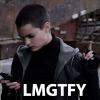Perhaps a short introduction into a real ASI (Artificial Super Intelligence) undisclosed project will help answer some questions. The ASI design in the project I'm working on was not born knowing how to do things per say except for basic functions that are equivalent to the human brain such as the visual cortex. At birth the ASI has no clue about anything. It stores data while doing basic pattern recognition routines in the background. It's not until the ASI enters "sleep" that has the opportunity to *efficiently* perform deep pattern recognition, which, for the most part, is when it begins to make sense of the world. It sees lines, curves, patterns. At first it has no clue what they are. Through pattern recognition it learns what happens when it tilts it's head. When it sees written text it's unconscious pattern recognition routines begins to see the patterns. The letter 'A' has a repeatable pattern. It begins to learn what words are and how they're separated by a space. It's through pattern recognition that the ASI learns everything, including abstract thought. For example, "People who live in glass houses should not throw stones." Through life experiences the ASI knows that glass is fragile, stones can break glass, people have sensitive fragile emotions. Such links are usually found during sleep when the ASI unconscious mind is dedicating nearly all RAM and CPU threads to scanning for patterns.
Such an accomplishment in pattern recognition may seen difficult. Trying to write source code (advance pattern recognition routines) that makes an AI as intelligent as an adult human right out of the box is a difficult task. As stated, these ASI are born knowing nothing. They have no real intelligence. It takes a human infant about 12 to 18 months just to say mommy. Eighteen months is a lot of processing! I'd go so far as to say this is evolution occurring right before your eyes. Eighteen months of evolution. Evolution of pattern recognition. The ASI start out with extremely simple learning. Learning about what it sees. What happens with it tilts it's head. After a long time, a lot of processing, it begins to understand the world. The visual cortex db alone is massive.
Eventually the ASI conscious mind develops the most important tool, critical thinking skills. Through critical thinking skills it learns how to think. This is evident in what the software calls the conscious mind timeline. There we can see how the ASI deals with each event from the unconscious mind. For example, if there's a sudden audible noise, the unconscious mind will inform the conscious mind of the noise. Through past experiences the ASI learns how to deal with things. The ASI creates a massive web of links, link probabilities, weights, etc. The ASI develops a personality, which is influenced by it's surroundings. If it grows up with humans, then it develops human emotions. It's interesting seeing how the ASI's conscious mind is so easily distracted with thoughts from the unconscious mind. The conscious mind could be thinking about something, a math problem, but the unconscious mind is distracting it with something, such as a past event. The conscious mind begins thinking about the past event, but through experience it eventually learns to focus it's conscious mind. Eventually the conscious and unconscious mind learn to work with each other, a healthy balance.
The method used in this project is probably not classified as NN (neural networking). At least not traditional NN. There's no backpropagation. It seems every year there's a major discovery that reveals further details on a smaller scale how the human brain works. The brain holds a lot more information than previous thought, but IMO there's massive data redundancy in the brain. Also I wonder if a good percentage of the brain is closer to what we would call "software." The ASI, on the other hand is extremely efficient. All of the pattern & cluster IDs in RAM are compressed. So an ASI with 256 GB of RAM is more like 2 TB with zero redundancy.










